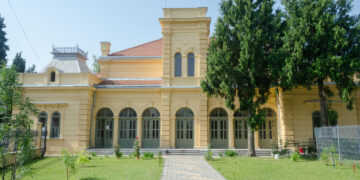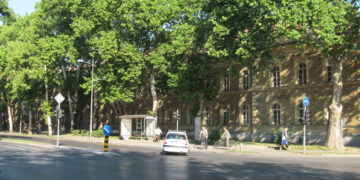The capital and largest city of the Autonomous Province of Vojvodina, the seat of provincial authorities, Novi Sad, is situated on the banks of the River Danube, on the border of Backa and Srem, in the central part of Vojvodina. It is administrative center, as well as economic, cultural and tourist center. Its geographical coordinates are 45°20’0“ north latitude and 19° 51’0“ east longitude.
The surface of the municipal areas of the city (with 15 suburbs) is 702,7km². It is located at an altitude of 72 to 80m, where the entire territory is dominated by moderate continental climate. According to official data of the census of 2011, Novi Sad today has 341,625 inhabitants.
It is located in a very enviable geographic position because it represents „the heart“ of important land-related traffic from the Far and Middle East to the North-East of Europe. It is linked to the waterway to the Danube-Tisa-Danube (DTD) which enables direct transport link to Central Europe upstream and downstream to the Black Sea. This position allows the city to develop the industry, to have a significant trade with other cities and, of course, to be attractive to domestic and foreign tourists.
From Novi Sad you can reach anywhere, thanks to good transport infrastructure. Although the city does not have its own airport, to the Belgrade airport „Nikola Tesla“ is just 80km, hour and a half away driving by car. Ten kilometers from the city center, in Čenej, there is a sport airport Čenej that is used for commercial purposes. Despite the lack of passenger airport, bus and train lines connect the city with all major European cities such as Budapest, Vienna, Prague, and Moscow. It also has excellent connections with other major Serbian cities, such as Subotica, Sombor, Belgrade, Sabac, and Zrenjanin.
As for rail transport, in Novi Sad railway station enters the international railway Istanbul-Athens-Belgrade-Budapest-Prague-Berlin, Warsaw and Moscow. Although the country has not taken much effort in investing in rail transport, and there are less efficiency and speed of travel, many people still use this form of transport for long journeys.
Climate
At the municipal area of the city is prevailing moderate continental climate characterized by expression of all 4 seasons, moderately cold winter and moderately hot summer. According to the Republic Hydro-meteorological Institute, the average annual temperature of the air in the city is 11 ° C. The summer months have an average temperature above 20 ° which corresponds to the population and to tourists who come to the site visits. The number of days with precipitation is 122 days a year. As for the winter months, December, January and February, they are followed by the low temperatures that range from an average of -4 ° C to 6 ° C.
According to data from the Meteorological Observatory Novi Sad, which performs measurements and readings in Novi Sad, the absolute maximum air temperature was 41.6 ° C in 2007, and the absolute minimum was -30.7 ° C in January, 1943. There is frequent snowfall, which favors the development of winter tourism on the mountain Fruska Gora.
Although, due to global climate change, all data must be considered relative, impacts on the temperate continental climate is not extreme, except precipitation that in recent decades have increased as occasionally causing floods in some parts of the village.



